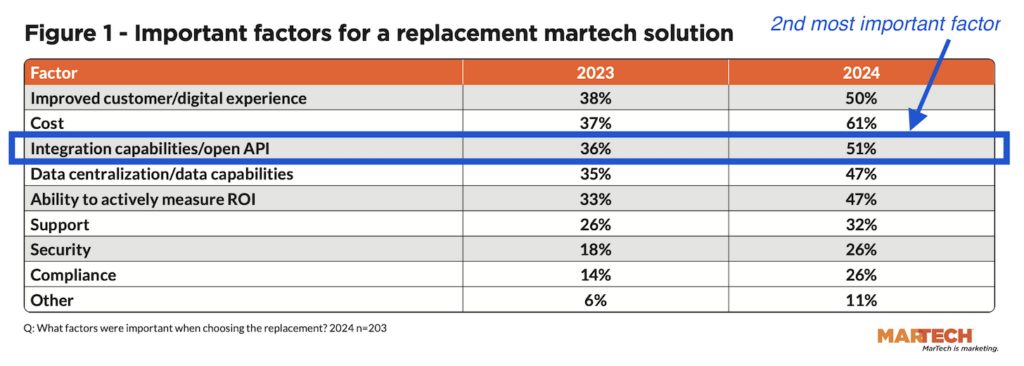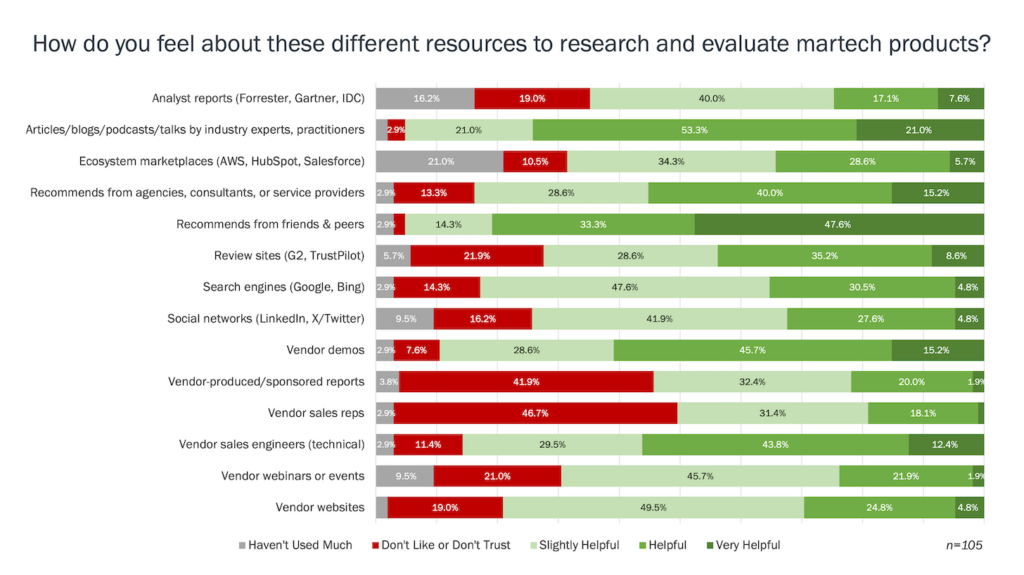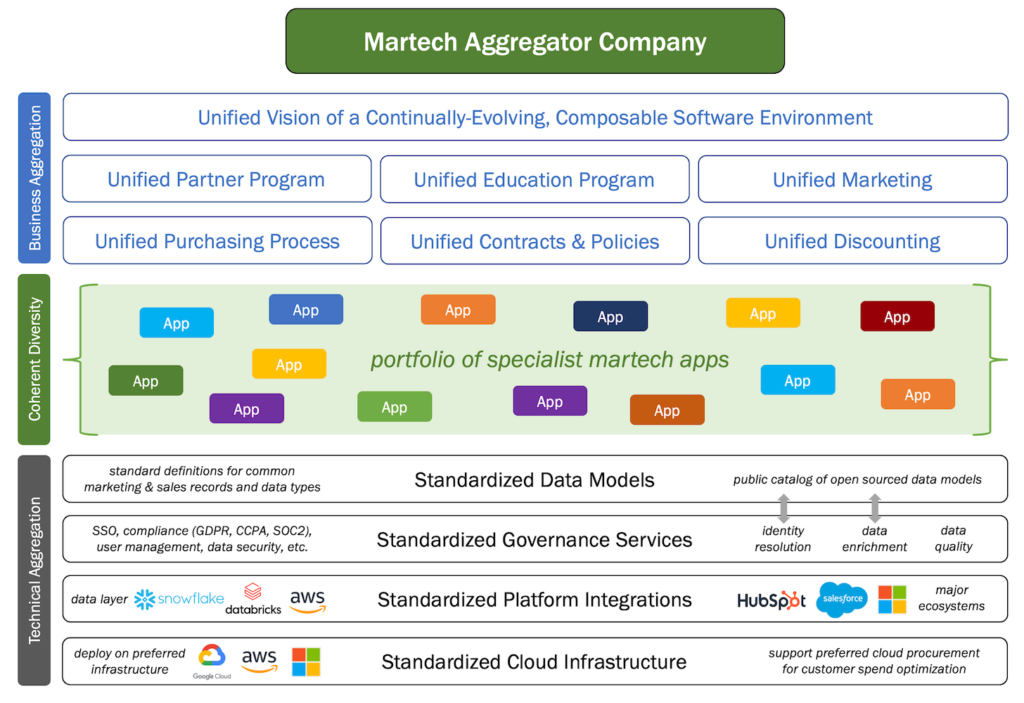This is a follow-up to my post on why marketing software will never be like ERP (but it’s still going to be a ridiculously huge, multi-billion dollar industry).
The marketing technology landscape continues to expand and evolve at a breakneck pace. But while its vibrancy is in large part due to a fertile environment for start-ups, the hundreds of billions of dollars at stake in this reincarnation of the marketing industry has attracted the attention of many very large businesses. They include existing big technology companies (e.g., Adobe), huge IT services firms (e.g., Accenture), and, of course, the biggest agencies and marketing service providers (e.g., from Axciom to VivaKi).
(I call this frothy intersection The Marketing Technology Frenemy Triangle.)
The major strategic question they’re facing — as are some of the maturing start-ups who are becoming large businesses themselves — is how to achieve stability and scale in such a diverse and rapidly changing technology landscape. The very dynamics of continuous disruptive innovation that make this environment so attractive to start-ups pose significant challenges to larger organizations.
There are three “pure” strategies for scale in this space — and, of course, an infinite number of variations — that we’re seeing different players pursue:
- Suite — everything in one box from one company
- Platform — a “marketing backbone” connecting products from many companies
- Portfolio — a flexible collection of loosely-coupled products supported by one company
While I believe that all of these strategies are viable in the right context, the pros and cons of each differ significantly — both for the ventures themselves and their customers.
Marketing Technology Suites: One-Stop Shops for Marketers
The idea of a marketing technology suite is simple: one unified software offering from a single vendor that includes everything you need — as long as you only need everything it has.
The appeal of a suite is obvious. It’s complicated for a marketing organization to get their arms around all the different marketing technologies out there, decide which ones are right for them, and figure out how to put the pieces together.
In theory, an all-in-one suite can spare marketers from having to deal with all that. They select one vendor, and they inherit a whole collection of marketing technology components and services already wired together. Depending on the sophistication of the suite and the marketing organization purchasing it, there may be configuration and customization required — but that happens within a relatively well-defined set of boundaries.
This is probably the fastest way for a marketing organization to implement a big chunk of new marketing infrastructure, requiring a minimal amount of marketing technologist talent on its team.
However, this simplicity comes with some trade-offs:
- If the suite doesn’t have a feature you want — or it doesn’t implement it in a way that you like — you’re often limited in what you can do about it.
- In particular, if significant changes happen in the broader marketing ecosystem — say, new Google or Facebook APIs, or a new channel like Pinterest — you may have to wait a while before the suite provider updates or integrates with them.
- Your eggs (and more importantly, your data), are all in one basket: switching to a different vendor — or hurdling a catastrophic event with your existing vendor — can be painful and expensive.
The key challenge for suites is that the fabric of the new marketing is still being woven. A suite provider must keep up with all the diverse facets of modern marketing under their umbrella — web sites, search, email, social, mobile, etc. — which are constantly in flux. A suite runs the risk of becoming the jack-of-all-trades, master-of-none. The more stuff that gets bolted on, the harder it becomes to maintain a cohesive, clean architecture — entropy works against you.
Are the trade-offs worth it? For small businesses without much appetite for marketing technology management, a suite makes a lot of sense. HubSpot is a good example of such a suite (although they seem to be pivoting towards more of a platform strategy — more on that in a bit), as is Infusionsoft.
For larger organizations with more at stake in their marketing infrastructure, the risks and benefits of a suite are more difficult to weigh. Does a suite mesh well with your structure and operations? Is it a cultural fit, for both your organization and your customers? What options do you have as needs diverge? Adobe and Aprimo are examples of more enterprise-class suite providers that cater to such organizations.
Strategically, a suite aims for two things: (1) a core set of features that hopefully have reasonable stability, such as email marketing; and (2) a relatively homogeneous (and readily identifiable) target audience. If they can achieve critical mass with an integrated solution before their customers need more modular solutions, then they can leverage that position in the future — such as with a new generation of suite or an evolution into more of a platform.
Marketing Technology Platforms: Backbones to the Body of Marketing
One solution to the constraints of an integrated suite is to open it up: a marketing technology platform. A platform doesn’t try to do everything itself, but instead provides a foundation on which many other more specialized products can be stacked.
A platform might initially appear suite-like, providing a wide collection of features out of the box. But unlike a closed suite, a platform is inherently open: it makes it easy to swap out or enhance those features with other third-party or custom components for more specialized needs as an organization (or the broader marketing ecosystem) evolves.
But usually, a platform is more than a starter-collection of disparate features. Typically, a platform has one primary purpose, something that can serve as a foundational service or master data repository that other software and services can leverage.
Salesforce.com is the quintessential example of a platform, providing a “system of record” for prospect and customer data. One of the tenets of their success was making it incredibly easy for third-party products to plug into their environment and share data back-and-forth. Organizations can pick and choose the plug-ins that best serve their needs — or write their own if they want something more custom-tailored.
Marketing automation companies — such as Eloqua, Marketo, Neolane, and Pardot — are to varying degrees pursuing platform strategies, seeing customer profiling and interaction through marketing automation as a more sophisticated “system of record” than CRMs. ExactTarget is trying to leverage their enterprise email marketing service as a platform. And as mentioned earlier, Hubspot is transitioning to a platform strategy — worth reading this interview with their CEO on becoming a “marketing OS”.
Other platform contenders are based around digital asset management, e-commerce, web content management, advertising data management. Since there’s some distance between these different categories, it’s certainly feasible for a company to adopt more than one platform, albeit in different capacities.
For companies selecting a platform, they need to weigh three things:
- How well does the “core” feature of the platform serve your needs? For instance, Salesforce.com is a great platform — but does its foundation as a CRM work well for you?
- How big is the ecosystem of partners and third-party developers around a platform? Is it healthy and growing? Will you have a lot of choices in what you can plug into it?
- How easy is it for you to work with their APIs to fully access your data and build your own custom enhancements? How stable are those APIs?
While it’s usually more work for a company to fully harness a platform, connecting in other products or making their own custom extensions, the benefit is a solution that is more tailored to your business. When new innovations appear in the market, it’s often easier to incorporate them into your system. This raises the stakes a bit too: if you’re going to use a platform as a cornerstone for other product purchases and custom development, you want to make sure that it’s a good foundation for the long haul. Switching platforms is a daunting proposition.
For platform companies they must do two things really right: (1) have a great core functionality, a tent-pole for marketing, that has longevity and lends itself well to connecting other marketing and sales components together; (2) grow their partner and third-party developer communities as fast as possible. There’s a bit of a chicken-and-egg conundrum there: customers want platforms with lots of partners; partners want platforms with lots of customers. A really strong offering for (1) can buy time to grow (2).
Note that growing a partner ecosystem is much more a business mission than a technical one: how much does the platform company really invest in the success of their third-party developers? It’s easier to say than do (i.e., a suite in platform’s clothing).
Marketing Technology Portfolios: We Have an App for That
Perhaps the most interesting marketing technology enterprises are those pursuing a portfolio strategy.
With a portfolio strategy, a company has a number of different marketing technology products that they offer. Social media marketing? We have an app for that. Mobile marketing? We have an app for that. And so on.
Usually, there’s not hardwired integration between the different products in the portfolio. Instead, they tend to be “loosely coupled” — they can work together and share data, but they don’t have hard dependencies. This can give portfolios some of the benefits of a platform: components from outside the portfolio can be swapped in when needed for a specific customer. It’s a very malleable technology strategy.
There are a lot of other advantages to a portfolio strategy:
- Each product in the portfolio can be “best in class” for its particular function
- Each product can evolve as quickly or slowly as the market demands, independent of the others
- As new marketing innovations emerge, new products can be acquired or developed independently
- One product can often “open the door” with a new customer, and then other products follow
- Services can shield customers from the technical complexity of more advanced products
But these advantages come with a different set of trade-offs.
A portfolio is not as tightly integrated as a suite, even if it appears on the surface to cover much of the same functionality. How big of a challenge this is depends on how tightly coupled you believe the different facets of modern marketing need to be. Everyone agrees they should be coordinated, yes. But how tightly? Too loosely may leave cracks in customer experiences; too tightly may constrain different channels and programs from blossoming in their own natural way or adapting quickly to new requirements.
The other challenge is positioning. A suite or platform company has a manifest identity: the suite or platform. It’s not surprising that such companies tend to have product-centric cultures. But a portfolio has a more nebulous technical identity — that’s its strength but also its weakness.
This is why portfolio strategies are often best for services companies. Their identity is wrapped up in the service they provide customers — their portfolio of technologies is an enabler to fulfill that mission. Large agencies that are looking to develop their own technology offerings tend to follow this strategy, as do major marketing services firms such as Axciom, Epsilon, and Experian and major IT-into-marketing consultancies such as Accenture, Deloitte, and Sapient. And, of course, IBM.
For customers, engaging in a services relationship with a portfolio-oriented marketing technology company can deliver even greater speed-to-implementation than adopting a suite. The services teams, who are experts in using their portfolio, can help configure and operate solutions on your behalf. However, customers weighing a relationship with such a portfolio company should consider the following:
- Will the services provider integrate with your other systems outside of their portfolio?
- Will your internal staff be able to develop fluency with the technology to direct your own marketing initiatives without dependency on the services provider?
- Will you be able to continue to use the technology if you part ways with the service company at a later point? Not just licensing, but feasible operations and maintenance?
- Will you be able to extract your core business data from the service, as both insurance for catastrophe and the option to transition to other offerings?
The portfolio strategy is immensely flexible, and it can give a company the greatest adaptability to ongoing changes in marketing. Unlike suites or even platforms, there’s less risk of technical atherosclerosis — assuming the portfolio is actively managed. But the vision of how the pieces fit together into a cohesive offering to customers requires a narrative that transcends the technology. That’s an opportunity and a challenge.
Hybrid Marketing Technology Strategies
Although the “pure” strategies described above frame the landscape of how large marketing technology companies are evolving, the reality is more subtle. Many companies mix these strategies to varying degrees. For instance, Adobe has a digital marketing suite, but they also have a non-services based portfolio of other marketing products. Or IBM, which at the highest level seems like a services-oriented portfolio company, is large enough to contain entire suites/platforms within their portfolio.
But hopefully identifying the core strategy of a company helps clarify their strengths and challenges — whether you are growing such a company or you’re a customer or partner considering which vendors to align yourself with.
For marketers, remember: you are the software you use.
P.S. In full disclosure, in case you don’t know, I’m the co-founder of a marketing technology company, ion interactive, that produces a product for advanced landing page management and conversion optimization. (See why landing pages are awesome.) You could argue that biases me towards platforms and portfolios, as those strategies are more compatible with my company to plug into those environments. On the other hand, I might make the case that our strategy was chosen because I believe the marketing technology landscape favors platforms and portfolios. (On top of that, we often sell our product to people who have suites anyway, as it doesn’t require any deep integration.) But please interpret the above analysis with that aspect of my perspective in mind.







This is a great overview!
I would recommend this article as a good starting place for online merchants who are having a hard time deciding which vendor or platform to use with their business.
Which type of structure would you advocate as the most conducive to change and grow with a company?
This is a very useful summary – I like the three views on suite, Platform and portfolio. I am curious as to how consumer data can be in a single data base when choosing the Platform or portfolio options. It would be great to see a compatability matrix between the products to see what products work well with other products in the marketing landscape.
Pingback: CMO vs. CIO? The future of marketing + IT | Central Desktop Blog
Great article! Even though you’re specifically referring to marketing technology, this is applicable to any software company. I can apply your concepts and definitions to my own situation quite well, and I look forward to sharing these ideas with my colleagues. Thanks.
I just stumbled across this while working to explain exactly the same topic. This was insightful early last year and it continues to shine. Nice Paper drawings too, Scott. I was in the process of sketching out similar thoughts as I was Googling.